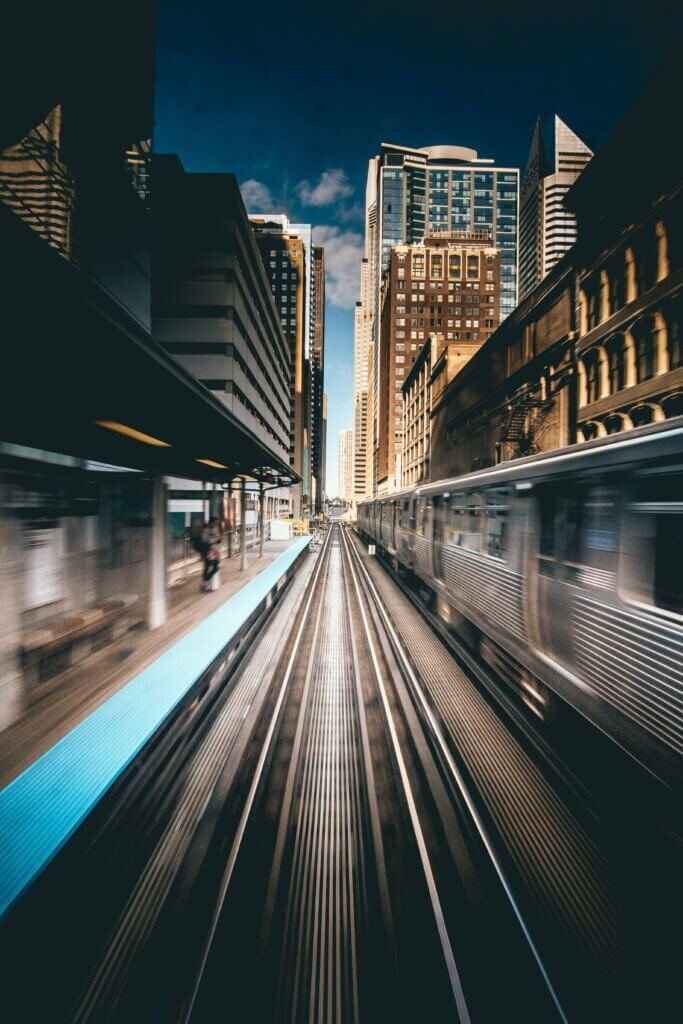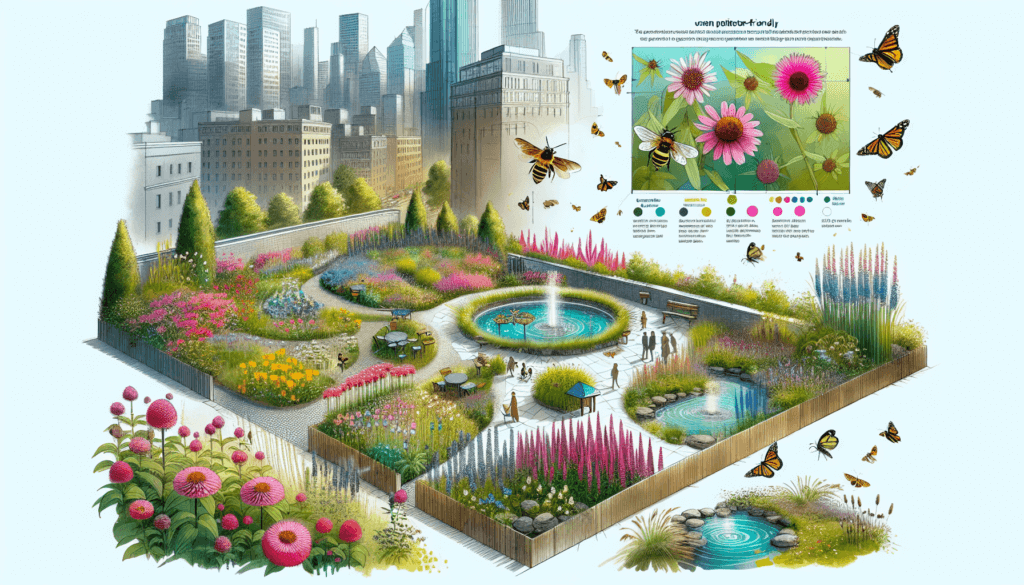Creating a vibrant and flourishing garden in an urban setting may seem like a daunting task, but with the right approach, you can design a space that not only adds beauty to your surroundings but also supports the vital role of pollinators. In this article, we will explore some practical and easy-to-implement tips on how to transform your urban garden into a haven for pollinators. From selecting the right plants to creating suitable habitats, you’ll discover simple yet effective ways to attract and sustain bees, butterflies, and other essential pollinators right in your own backyard. Get ready to embrace nature’s buzzing guests and cultivate a pollinator-friendly oasis in your urban garden.

Choosing the Right Plants
When designing a pollinator-friendly urban garden, one of the first things you should consider is selecting the right plants. Choosing native plants is a great way to support local ecosystems and attract a wide variety of pollinators. Native plants have evolved alongside local pollinators and are well-adapted to the climate and soil conditions of your region. By incorporating native plants into your garden, you provide a familiar and reliable food source for bees, butterflies, hummingbirds, and other pollinators.
In addition to selecting native plants, it’s important to include a variety of flower shapes and colors in your garden. Different pollinators are attracted to specific flower shapes and colors, so by including a diverse range of flowers, you can attract a wide array of pollinators. Some pollinators, like bees and butterflies, are particularly drawn to bright colors such as red, orange, and purple. Others, like hummingbirds, are attracted to tubular or trumpet-shaped flowers. By incorporating different flower shapes and colors, you can create a visually stunning garden that is also a haven for pollinators.
Choosing plants with extended blooming periods is another key factor in designing a pollinator-friendly garden. Pollinators rely on a continuous supply of nectar and pollen throughout the growing season, so including plants that bloom at different times ensures there is always a food source available. By selecting plants with varying flowering periods, you can create a garden that provides a reliable and abundant food source for pollinators from early spring to late fall.
Providing Shelter and Nesting Sites
In addition to food sources, providing shelter and nesting sites is crucial for attracting and supporting pollinators in your urban garden. Including dense shrubs and trees in your garden provides both shelter and nesting sites for various pollinators. Shrubs and trees offer protection from predators, harsh weather conditions, and serve as resting places for pollinators. Native shrubs and trees also provide additional food sources, such as berries or seeds, which can attract a greater variety of pollinators to your garden.
Another effective way to provide nesting sites for pollinators is by using nesting boxes and insect hotels. These structures are especially useful for solitary bees and other pollinators that need cavities to lay their eggs. Nesting boxes can be constructed with different-sized holes to accommodate various bee species, while insect hotels can house a range of beneficial insects, such as ladybugs and lacewings. By incorporating these structures into your garden, you create additional habitat and encourage pollinators to make your garden their home.

Ensuring a Water Source
A reliable water source is essential for attracting and supporting pollinators in your urban garden. Installing a birdbath or fountain can provide pollinators with a much-needed source of water for drinking and bathing. When choosing a birdbath or fountain, opt for designs that feature shallow areas or provide a gradual slope to ensure the safety of smaller pollinators like bees and butterflies. Including stones or pebbles in the water feature can also serve as perches for butterflies and other pollinators.
Creating shallow water areas in your garden is another way to ensure a water source for pollinators. Shallow dishes or saucers filled with water and placed in different areas of your garden can attract pollinators that prefer to drink from small puddles or moist soil. These shallow water areas can also benefit butterflies by providing a spot for them to gather minerals and nutrients from damp soil. Remember to change the water regularly to prevent the spread of diseases and keep it fresh for the pollinators.
Avoiding Pesticides and Herbicides
To truly create a pollinator-friendly garden, it is important to avoid using pesticides and herbicides. These chemicals can be harmful to pollinators, disrupting their reproductive systems, impairing their navigation abilities, and even causing death. Instead, opt for organic pest control methods such as introducing beneficial insects like ladybugs or lacewings that feed on garden pests. You can also practice integrated pest management (IPM), which involves using a combination of cultural, biological, and mechanical methods to manage pests while minimizing harm to pollinators.
Cultural methods include maintaining healthy plants through proper watering, mulching, and fertilizing to reduce plant stress and make them less susceptible to pests. Biological methods involve using natural predators or parasites to control pest populations, such as introducing nematodes to manage soil-dwelling pests. Mechanical methods include manually removing pests or using physical barriers like nets or row covers to prevent them from reaching your plants.
By avoiding the use of pesticides and herbicides and adopting alternative pest control methods, you can create a safe and welcoming environment for pollinators in your urban garden.

Creating Sun and Shade Areas
When designing your pollinator-friendly urban garden, it’s important to plan for both sun-loving plants and shade-tolerant species. Some pollinators, like bees and butterflies, thrive in sunny areas with plenty of sunlight, while others, like certain butterfly species, prefer cooler and shaded spots. By incorporating both sun and shade areas into your garden, you can cater to the specific preferences of different pollinators.
For sun-loving plants, select species that thrive in full sun and can tolerate the heat and direct sunlight. These plants often have vibrant flowers that attract pollinators and can serve as a focal point in your garden. On the other hand, for shade-tolerant species, opt for plants that can thrive in partly shaded or fully shaded areas. These plants often have adapted foliage and flowers that are better suited to lower light conditions. By creating a mix of sun and shade areas, you can provide a diverse range of habitats for pollinators and ensure their needs are met.
Designing Continuous Blooming
To maximize the attractiveness of your urban garden to pollinators, it’s important to design for continuous blooming throughout the growing season. Select plants with different flowering periods to ensure a consistent supply of nectar and pollen. Early spring blooming plants such as crocuses and primroses can provide a much-needed food source for pollinators emerging from winter dormancy. Mid-summer blooming plants like lavender and coneflowers attract a wide range of pollinators and add beauty to your garden. Late blooming plants such as asters and goldenrods can provide a valuable food source for pollinators preparing for the upcoming winter.
In addition to selecting plants with different flowering periods, employing succession planting techniques can help maintain continuous blooming. Succession planting involves staggered plantings throughout the growing season, ensuring that as one plant finishes blooming, another takes its place. By carefully planning your garden and incorporating a mix of early, mid, and late-season bloomers, you can create a garden that provides a consistent and abundant nectar and pollen supply for pollinators year-round.

Keeping a Variety of Pollinators in Mind
A pollinator-friendly garden should cater to a variety of pollinators, including bees, butterflies, and hummingbirds. To attract bees, provide a range of flowering plants with nectar-rich flowers that are easily accessible. Bees are particularly drawn to blue, purple, and yellow flowers with wide landing pads. Avoid using double-flowered varieties, as they often have reduced or inaccessible nectar and pollen.
To attract butterflies, incorporate plants that provide both nectar and host plants for their caterpillars. Butterflies are attracted to brightly colored flowers with sweet fragrance, such as milkweed, coneflowers, and butterfly bush. Including larval host plants like milkweed, dill, and parsley can also support butterfly populations as they provide food for caterpillars.
To attract hummingbirds, incorporate plants with tubular flowers that are rich in nectar. Hummingbirds are especially attracted to red, orange, and pink flowers, but they will visit other colors as well. Include plants like bee balm, trumpet vine, and salvia to create a hummingbird-friendly garden and enjoy their acrobatic displays.
By providing a variety of flowers, colors, and suitable habitats, you can attract and support a diverse array of pollinators in your urban garden.
Providing Food Sources
In addition to flowers, it’s important to provide food sources for pollinators in the form of nectar-rich flowers, fruits, and berries. By including plants with nectar-rich flowers, you provide a readily available food source for bees, butterflies, and other pollinators. Some examples of nectar-rich flowers include sunflowers, coneflowers, zinnias, and bee balm. These flowers not only provide sustenance for pollinators but also add vibrant colors and beauty to your garden.
Incorporating plants with fruits and berries is another way to provide food for pollinators. Once the flowers have been pollinated, many plants produce fruits or berries that are consumed by birds and small mammals. These fruits and berries are an excellent source of nutrients and can attract a different set of pollinators, such as birds and bats, to your garden. Examples of fruit-bearing plants that can attract pollinators include raspberries, blueberries, elderberries, and chokeberries.
By incorporating a variety of nectar-rich flowers, fruits, and berries into your garden, you can provide a diverse range of food sources for pollinators and ensure their nutritional needs are met.

Creating Windbreaks
Creating windbreaks in your urban garden can provide valuable shelter for pollinators and help create microclimates that protect them from harsh weather conditions. Tall grasses or shrubs planted strategically along the edges of your garden can act as windbreaks and provide a refuge for pollinators. These windbreaks not only provide shelter from strong winds but can also offer protection from harsh sun exposure and create more favorable growing conditions for plants and pollinators.
Another option for creating windbreaks is using fences or trellises. Tall fences made from materials like wood or metal can shield plants and pollinators from excessive wind and create a microclimate within your garden. Trellises covered with climbing plants can serve a dual purpose by providing wind protection and attracting pollinators through their flowers. By incorporating windbreaks into your garden design, you can create a more inviting and comfortable environment for pollinators.
Maintaining a Chemical-Free Garden
To ensure the health and well-being of pollinators, it’s important to maintain a chemical-free garden. Avoiding the use of synthetic fertilizers is key, as excessive fertilizer application can harm pollinators and alter the nutrient balance in the ecosystem. Instead, opt for organic soil amendments such as compost or well-rotted manure to provide essential nutrients to your plants without negatively impacting pollinators.
Incorporating organic pest control methods is another crucial aspect of maintaining a chemical-free garden. As mentioned earlier, using beneficial insects like ladybugs or lacewings can help control pest populations naturally. Additionally, practicing good garden hygiene by removing weeds and maintaining a clean garden space can reduce the need for chemical interventions. Regularly inspecting your plants for signs of pests or diseases and taking appropriate action early on can prevent infestations and further reduce the need for chemical pesticides.
By avoiding the use of synthetic fertilizers and adopting organic pest control methods, you can create a healthier and more sustainable garden for pollinators.
In conclusion, designing a pollinator-friendly urban garden requires careful consideration of plant selection, providing shelter and nesting sites, ensuring a water source, avoiding pesticides and herbicides, creating sun and shade areas, designing for continuous blooming, keeping a variety of pollinators in mind, providing food sources, creating windbreaks, and maintaining a chemical-free garden. By following these guidelines and incorporating the needs of various pollinators into your garden design, you can create a vibrant and thriving ecosystem that supports pollinator populations and contributes to the overall health of your local environment.


